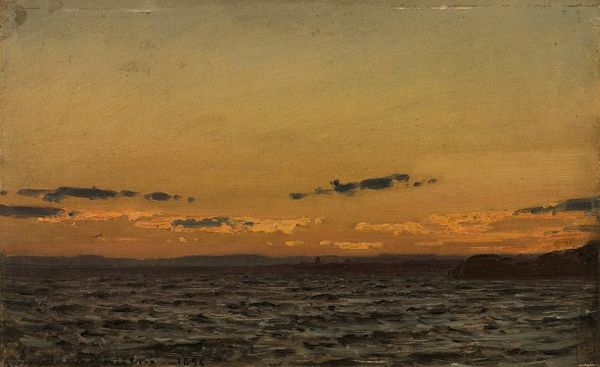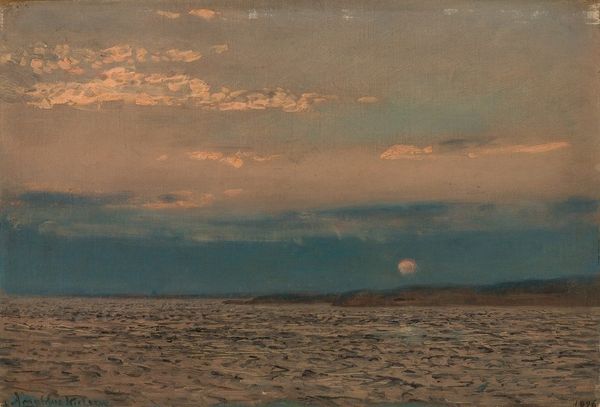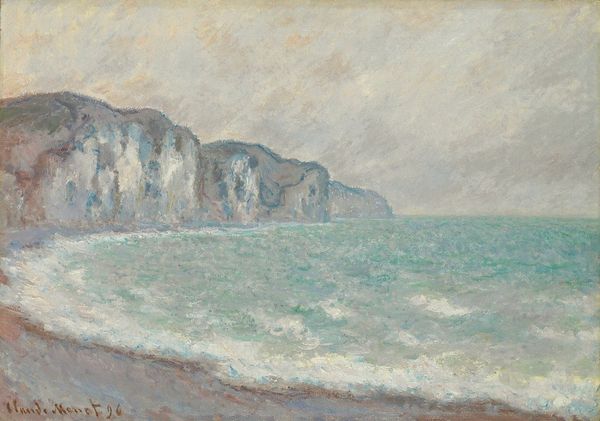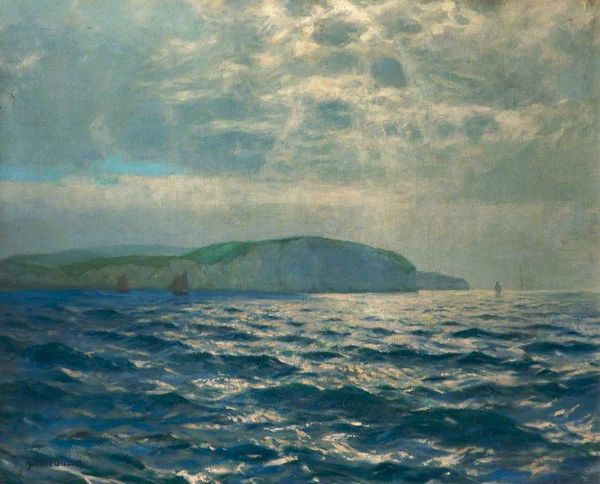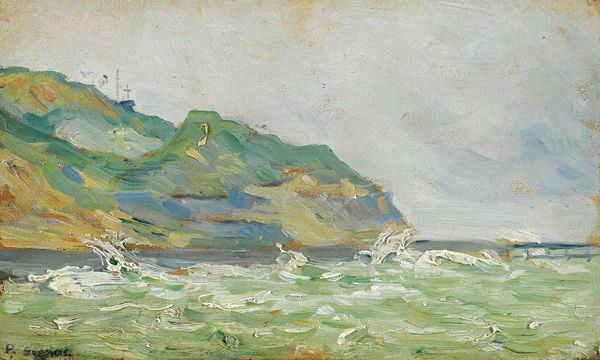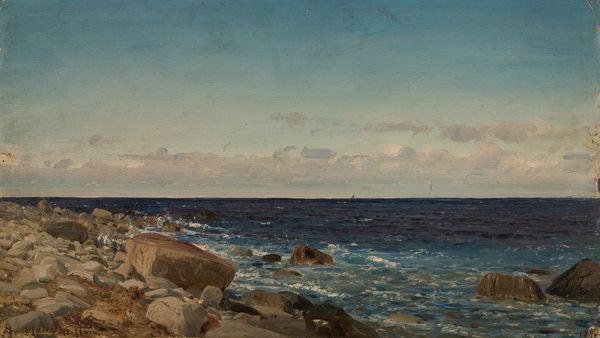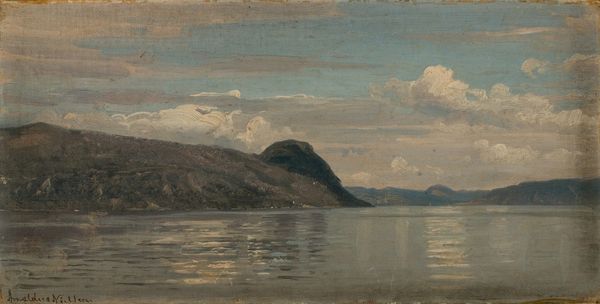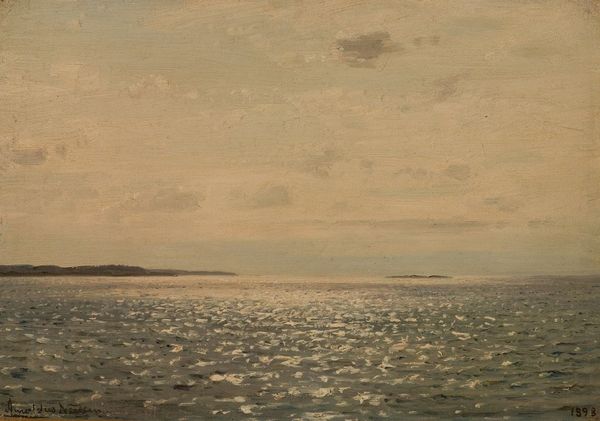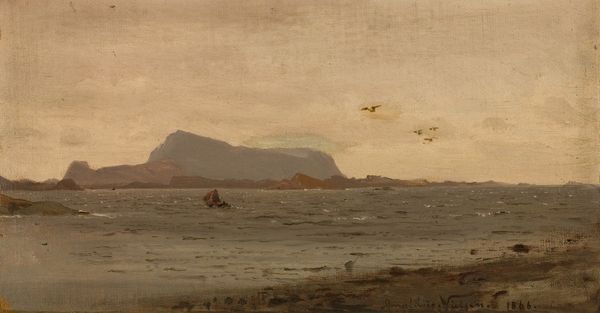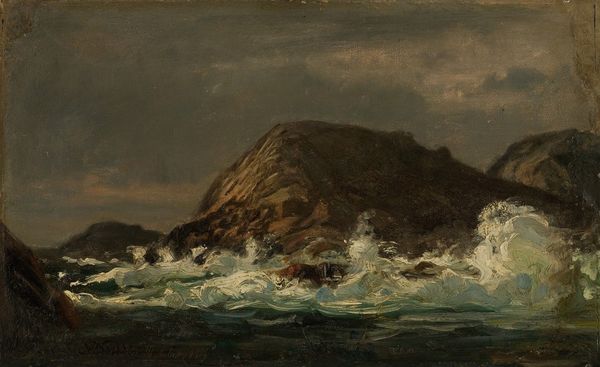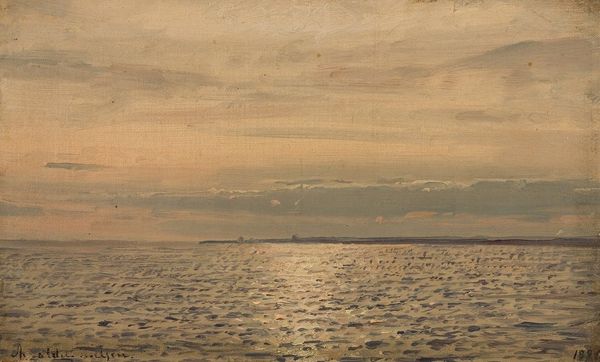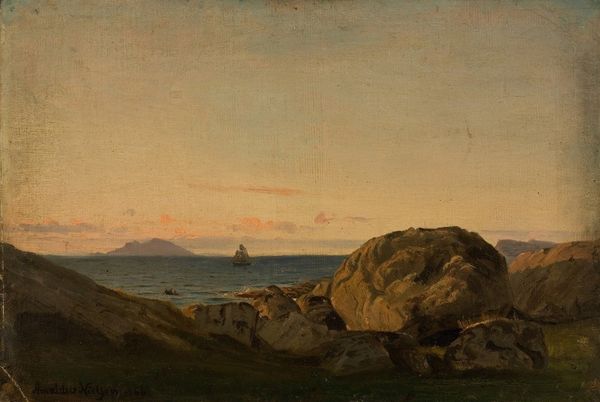
Copyright: Public Domain: Artvee
Editor: This is "Kap San Vincente," painted by Amaldus Nielsen around 1860. It's an oil painting, and I'm really drawn to how he captured the vastness of the sea with these almost tangible brushstrokes. What do you see in this piece, Professor? Curator: For me, this image invites a look into the very means of its production. We have Nielsen venturing *en plein air,* engaging directly with the elements. Consider what it meant in 1860 to haul your equipment, your paints, out to a place like Cape St. Vincent. It speaks of labor and the raw materials at his disposal. Do you think the painting accurately captures the feeling of being there? Editor: I think it does! The brushwork, especially on the water, gives it a real sense of movement and texture. But I wonder about the implications of his choices of materials. Was plein-air painting unusual back then? Curator: Yes, and Nielsen's embrace of it positions him within a broader shift toward naturalism. But it’s more than just accurate depiction; it is about being present, in nature, as an industrializing world moved away from it. The readily available, mass-produced paint in tubes facilitated this. His "Kap San Vincente" represents access to new kinds of material engagement for artists. We can examine the economic conditions allowing paintings like these to be possible. How might Nielsen's intended audience influence how he approached making the art? Editor: That’s fascinating! I hadn't considered the connection to industrial production and the shift to readily available paint and equipment enabling outdoor painting. Curator: Exactly. Thinking about these artworks in terms of their production – the materials, labor, the context - reveals how art engages with broader societal forces and allows it to act almost as a historical document in the wake of industrial advancements. Editor: I'm definitely going to look at paintings differently now, considering how the materials themselves contribute to the meaning. Curator: I'm so glad to hear it. The materiality opens up a rich area for understanding art's role in society.
Comments
No comments
Be the first to comment and join the conversation on the ultimate creative platform.
